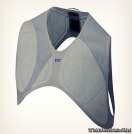题目内容
阅读下面材料,在空白处填入适当的内容(1个单词)或括号内单词的正确形式。
Helsinki, capital of Finland, is offering young people the chance to rent 1. cheap apartment in an old people's home, if they agree 2. (spend) time socializing with the elderly residents.
The city council(议会)is seeking 3. (apply) from renters under the age of 25 who would like to spend between three 4. five hours each week with their older neighbors. 5. exchange, they'll get a studio flat 6. (measure) 23 square meters with a private kitchen, bathroom and balcony for 250 euro per month. Those 7. apply don't need any specific care experience. There are staff to look after the elderly.
More than 60 people have applied for the spaces in less than a week, and the idea has also Been 8. (warm) welcomed by Finns on social media. "Great project! Hopefully it will spread to other areas, " 9. (write) one person on Facebook, while another supports the scheme for bringing 10. (difference) generations together.
 阅读快车系列答案
阅读快车系列答案

